#YPJ
Text
In Northern Syria, 2.5 million people are living in a stateless, feminist, religiously tolerant, anti-capitalist society of their own creation. They call their territory Rojava, and they defend it fiercely. They’re at war with the extremist group ISIS, and they’re doing better than anyone in the world expected — least of all the Western powers who seek to treat them as pawns.
It’s a complicated situation, but we in the rest of the world have much to learn from the Rojava revolution. To that end, we offer this long-form introduction to the history and the present struggle of the Kurdish people.
Long live the Rojava revolution!
#Rojava#A mountain river has many bends#democratic confederalism#communalism#YPG#YPJ#PYD#Solarpunk#Anarchism#Revolution#Libertarian#Freeblr
211 notes
·
View notes
Text

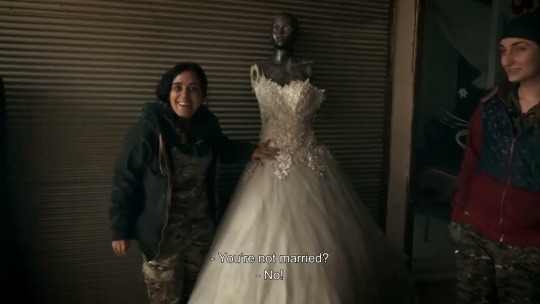
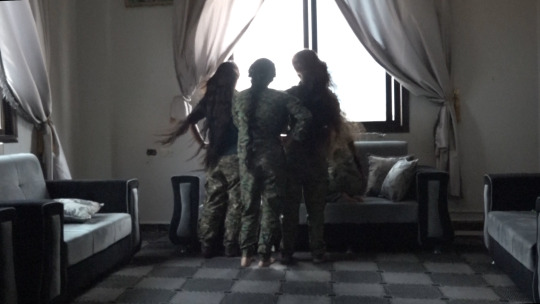
Dream's Gate/Darvazeye Royaha (2023)
Negin Ahmadi
65 notes
·
View notes
Text
People online: Zionism is colonialism!! Stop eraseing the natives!
Genetic studies: umm. Well, actually -
I'm not biologist! But I try to explain this in simpler words. Feel free to correct me if I misunderstood anything :)
(can't believe I spent about 4 hours on it)
In short - the study compared the Y genes of several different groups - aka the paternal genetic history (father-to-son).
Finding more similarities= genetically closer= has a more common ancestry.
(like, brother is closer then cousin closer then a stranger)
Let's start!
"The investigation of the genetic relationship among three Jewish communities revealed that Kurdish and Sephardic Jews were indistinguishable from one another, whereas both differed slightly, yet significantly, from Ashkenazi Jews. The differences among Ashkenazim may be a result of low-level gene flow from European populations and/or genetic drift during isolation."
AKA: genetically speaking, there's no difference between Jews from various MENA countries (Mizrahim). (Sephardic were mostly Moroccan origins, Kurdish sample mostly north Iraq/Syrian origins)
An important note: Eda refers to the spesific traditions/subgroup, and passed down by the paternal line (father-to-son). This is in order to preserve traditional practices, that were different in different communities (e1)
There's a small genetic difference between Mizrahi jews and Ashkenazi Jews. This could be due to isolation or "low level gene flow" (in other words, converts and (mostly) children born from rape. Which was... way more common then you think. Look up "Pogrom".)
Next!
In a report published elsewhere, we recently showed that Jews and Palestinian Arabs share a large portion of their Y chromosomes, suggesting a common ancestry (Nebel et al. 2000). Surprisingly, in the present study, Jews were found to be even closer to populations in the northern part of the Middle East than to several Arab populations. It is worth mentioning that, on the basis of protein polymorphisms, most Jewish populations cluster very closely with Iraqis (Livshits et al. 1991) and that the latter, in turn, cluster very closely with Kurds (Cavalli-Sforza et al. 1994). These findings are consistent with known cultural links that existed among populations in the Fertile Crescent in early history.
Here, the mention earlier studies about genetic links between Jews (of all Edot) and Palestinian arabs. This can mean there's a common ancestry to the population (same grand-grand-etc.-father).
Jews are geneticly similar to Iranians, who are geneticly similar to Kurds (e2)
Those genetic links aren't suprising, and consistent with what we know from history about population and communities in the Fertile Crescent area.
Muslim Kurds
The Kurds are considered an ancient autochthonous population (Kinnane 1970; Pelletiere 1984) who may even be the descendants of the shepherds who first populated the highlands during the Neolithic period (Comas et al. 2000). Although Kurdistan came under the successive dominion of various conquerors, including the Armenians, Romans, Byzantines, Arabs, Ottoman Turks, and Iraqis (Kinnane 1970), they may be the only western Asian group that remained relatively unmixed by the influx of invaders, because of their protected and inhospitable mountainous homeland (Pelletiere 1984). The Y chromosome variation of Muslim Kurds falls within the spectrum observed in other populations (Turks and Armenians) living in the same region. The three populations are closer to Jews and Arabs than to Europeans. This is in good agreement with data on classical markers (Cavalli-Sforza et al. 1994). However, on the basis of mtDNA polymorphisms, Kurds were reported to be more closely related to Europeans than to Middle Easterners (Comas et al. 2000).
Kurds are very ancient ethnic group. Possibly the only western-asian group that remained relatively unmixed, despite (pointing history).
Kurds Y chromosomes are pretty similar to those in the same area (Turks and Armenians), and those three groups Y chromosomes are more similar to Jews and Arabs then to Europeans.
Now, that's interesting: the similarities is also in classical markers, but it's different from studies on mtDNA (Maternal/mother line), which then shows more similar to Europeans than Arabs and Jews.
(idk if there are rumours/historical kurds stories/traditions about Patriarch communities with brides from distance? Or Matriarch communities with grooms from the (other) distance? But it sounds like the historical story is something like that.
Palestinian Arabs and Bedouin
Bedouin are largely nomadic Arab herders, with a tribal organization. They live in all Arab countries, constituting about one tenth of the population (Cavalli-Sforza et al. 1994). The Bedouin population of the Negev desert was found to be most distant from Jews and Muslim Kurds and to be closely related only to Palestinians. Both these Arab populations differ from the other Middle Eastern groups sampled for the present study, mainly in having a higher frequency of Eu 10 chromosomes, the majority of which they share with each other. Traditional marriage practices—such as male polygamy, a high rate of consanguineous marriages, and patrilocality—may have enhanced the low haplogroup and haplotype diversity of the Negev Bedouin, as was suggested elsewhere for the Bedouin tribes in the Sinai Peninsula (Salem et al. 1996).
Bedouins from the Negev (Southern Israel) were most different from Jews and Muslim-kurds, and closely related to Palestinian Arabs. Both Arab groups were(geneticly) very similar to eachother, but different from the other Middle Eastern groups in the study.
The main difference was a higher frequency of Eu 10 chromosomes, that were similar in the 2 groups.
We propose that the Y chromosomes in Palestinian Arabs and Bedouin represent, to a large extent, early lineages derived from the Neolithic inhabitants of the area and additional lineages from more-recent population movements. The early lineages are part of the common chromosome pool shared with Jews (Nebel et al. 2000). According to our working model, the more-recent migrations were mostly from the Arabian Peninsula, as is seen in the Arab-specific Eu 10 chromosomes that include the modal haplotypes observed in Palestinians and Bedouin. These haplotypes and their one-step microsatellite neighbors constitute a substantial portion of the total Palestinian (29%) and Bedouin (37.5%) Y chromosome pools and were not found in any of the non-Arab populations in the present study. The peripheral position of the modal haplotypes, with few links in the network (fig. 5), suggests that the Arab-specific chromosomes are a result of recent gene flow. Historical records describe tribal migrations from Arabia to the southern Levant in the Byzantine period, migrations that reached their climax with the Muslim conquest 633–640 a.d.; Patrich 1995). Indeed, Arab-specific haplotypes have been observed at significant frequencies in Muslim Arabs from Sena (56%) and the Hadramaut (16%) in the Yemen (Thomas et al. 2000). Thus, although Y chromosome data of Arabian populations are limited, it seems very likely that populations from the Arabian Peninsula were the source of these chromosomes. The genetic closeness, in classical protein markers, of Bedouin to Yemenis and Saudis (Cavalli-Sforza et al. 1994) supports an Arabian origin of the Bedouin. The alternative explanation for the distribution of the Arab-specific haplotypes (i.e., random genetic drift) is unlikely. It is difficult to imagine that the different populations in the Yemen and the southern Levant, in which Arab-specific chromosomes have been detected at moderate-to-high frequencies, would have drifted in the same direction.
The eu10 Y chromosomes geneticly linked to the arab peninsula, and wasn't found in non-arab population. It's very possible that arab-Palestinians and Bedouins are the descendants of immigrants and population movement, possibly during the Caliphate - the Muslim Empire (Arab dynasties 632-1258; Mamluk Sultanate 1250-1517; ottoman/turkish 1517-1924) (e2)
Example and more information undercut:
Eda (plural - Edot): community, subgroup. Usually refers to a group using different Minhagim (traditions).
For example, my Yemeni ancestors only said the "Hamotzi" prayer (said before eating bread) during Passover, as wheat was rare and expensive, and wasn't a usual part of their diet.
Another differences include Te'amim (ways to read the Torah. Sort of like 🎶 for voice); Kitniyot (o lo lithiyot/jk) - do you eat it on passover? What about the oil?; certain holidays (traditional Mimuna, Sigd.) (Yat kislev🙈)
Through history, even though most Jewish communities weren't completely isolated from one another, it still took a lot of time to pass questions and information. So different places gained different traditions.
Basically, it goes "(go by) paternal traditions" (מנהג אבות)
In the past, people that moved from one community to another would take over the new traditions.
Since moving and immigration became far more common, and started to move as communities, people kept their traditions. For example, in my area I have 5 small synagogues, each was founded by a community from different diaspora that wanted to keep their traditions.
And it's okay! It's even great 😸
(e2) kurds:
Oh look, another ethnic group fighting for freedom and right for self government.
Population: about 30m ppl worldwide. In current geography, the land split between Iraq, Syria and Turkey. Also fighting ISIS. Look up YPJ.
#genetic studies#israel#palestine#genetics#genetic screening#kurdistan#kurds#muslim#jews#arab#arab peninsula#Palestinians#Bedouin#biology#history#fascinating#iraq#syria#turkey#YPJ#ncbi#peer review#science#biology study
16 notes
·
View notes
Text
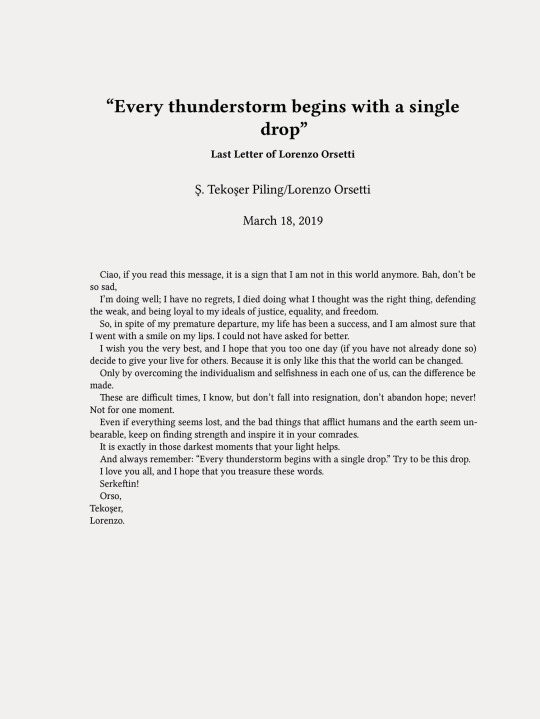
Lorenzo (Orso) Orsetti, "Tekoşer Piling" (February 13, 1986 – March 18, 2019)
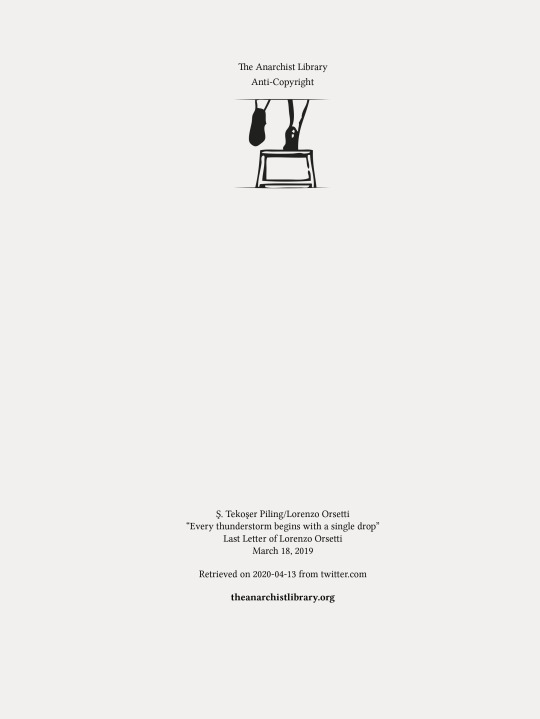

«Ciao, se state leggendo questo messaggio è segno che non sono più a questo mondo. Be', non rattristatevi più di tanto, mi sta bene così; non ho rimpianti, sono morto facendo quello che ritenevo più giusto, difendendo i più deboli e rimanendo fedele ai miei ideali di giustizia, uguaglianza e libertà. Quindi nonostante questa prematura dipartita, la mia vita resta comunque un successo e sono quasi certo che me ne sono andato con il sorriso sulle labbra. Non avrei potuto chiedere di meglio. Vi auguro tutto il bene possibile e spero che anche voi un giorno (se non l'avete già fatto), decidiate di dare la vita per il prossimo perché solo così si cambia il mondo. Solo sconfiggendo l'individualismo e l'egoismo in ciascuno di noi si può fare la differenza. Sono tempi difficili, lo so, ma non cedete alla rassegnazione, non abbandonate la speranza: mai!
Neppure per un attimo. Anche quando tutto sembra perduto, e i mali che affliggono l'uomo e la Terra sembrano insormontabili, cercate di trovare la forza e di infonderla nei vostri compagni. È proprio nei momenti più bui che la vostra luce serve. E ricordate sempre che «ogni tempesta inizia con una singola goccia». Cercate di essere voi quella goccia. Vi amo tutti, spero farete tesoro di queste parole. Serkeftin!»
– Orso, Tekosher, Lorenzo
From: Maria Edgarda Marcucci, Rabbia proteggimi. Dalla Val di Susa al Kurdistan. Storia di una condanna inspiegabile, Rizzoli Lizard, Milano, 2022
(images: “Every thunderstorm begins with a single drop”. Last Letter of Lorenzo Orsetti, Ş. Tekoşer Piling/Lorenzo Orsetti, March 18, 2019. Tekoşîna Anarşist. The Anarchist Library. Plus: a handwritten sheet of paper signed by "Orso, Tekosher, Lorenzo", via Internationalist Commune of Rojava)
#graphic design#manuscript#pamphlet#lorenzo orsetti#tekoşer piling#yekîneyên parastina gel#maria edgarda marcucci#ypg#yekîneyên parastina jin#ypj#tekoşîna anarşist#internationalist commune of rojava#the anarchist library#1980s#2010s#2020s
12 notes
·
View notes
Photo

Today is the tenth anniversary of what is the most important revolution of our times. BIJI BERXWEDANA ROJAVA!
302 notes
·
View notes
Text
Türkiye has resumed bombing Rojava.
This bombing takes place as a retaliation for the failure of Turkey's operations on the Iraqi-Syrian border along with the killing of 12 soldiers by the Kurdistan Workers' Party (PKK).
ترکیه بمباران روژاوا را دوباره از سر گرفته است.
این بمباران به عنوان تلافی ناکامی عملیات ترکیه در مرز عراق و سوریه همراه با کشته شدن ۱۲ سربازان توسط مبارزان حزب کارگران کوردستان (PKK) صورت میگیرد.
#روژاوا
#ترکیه
#Rojava
#Turkey
#Turkiye
#rojava#Türkiye#pkk#ypj#ypg#turkey#iraq war#iraq#syrian civil war#free syria#us shoots down armed turkish drone flying near american troops in syria#syria#syria news#syrian refugees#syrian#class war#kurdistan#waristerror#wariscapitalism#kurdistan workers party#ausgov#politas#auspol#tasgov#taspol#australia#fuck neoliberals#neoliberal capitalism#anthony albanese#albanese government
15 notes
·
View notes
Text

8 notes
·
View notes
Note
feel free to ignore this question. but I'm actually fr wondering what it was like to be trans in the ypg? the pkk has a notably radical policy on women's liberation, but from my understanding jineologie is very binary and clearly understood from a cis pov.
I wish I could offer a satisfying answer. Sadly, until just a year ago, I was cis and have no sweet clue. I need to read more into Apo's work to get a vibe, but that wouldn't surprise me very much. For leftist groups, the PKK and YPG are relatively conservative (at least I feel in some ways).
Notable is that the women's organizations (YJA-STAR and YPJ) are separate groups from the PKK and YPG which are male-oriented. It's actually more confusing than that because they have a sort of...parallel command structure? So for example the "base" I was at had both a male and female commander who sort of co-commanded the actual contingent of militia.
As I noted in a previous ask, it's been almost ten years. There is the very real possibility of change on the ground since I've been there. I don't think that members of the PKK or YPG are trans- or homophobic as part of their ideology. However I have to be clear that this topic didn't really come up (or if it did I missed it because of the language barrier) so heaping grains of salt and all that.
2 notes
·
View notes
Text
I’ve heard far too many horror stories about these cursed things.
Russia has been using them in Ukraine and Azerbaijan has been using them against Armenia too.
Ghastly bloody things.
Also leaving this here too.
#dougie rambles#political crap#syrian civil war#drones#uav#kamikaze#Manbij#loitering munition#sick shit#fuck Erdogan#fuck putin#fuck Azerbaijan#syria#middle east#levant#sdf#ypg#ypj#Syrian democratic forces#anti imperialism#anti fascism
2 notes
·
View notes
Text
To all supporters of the Kurdish liberation struggle, anti-fascists, socialists, feminists, anarchists, communists, environmentalists, and those dedicated to a better world:
Turkey has launched probably the most widespread bombing campaign North-Eastern Syria has faced so far. Since October 5th, Turkey has conducted over 30 airstrikes, primarily in the Cizîre region and Kobanê. These airstrikes have targeted vehicles, villages, and especially critical civilian infrastructure, including oil- and power plants & gas stations, resulting in civilian casualties and casualties among internal security forces. Large areas experienced a total power blackout, with many hospitals, bread factories and other critical public institutions without electricity. The attacks continued this morning when a Corona Hospital & a power station were targeted.
Despite the obvious war crimes, no reaction has been heard from the international community so far.
79 notes
·
View notes
Text
vimeo
Born from Urgency, 2017 by Joey L. is the second of a three-part documentary series released by photographer Joey L. (following Guerrilla Fighters of Kurdistan, 2015) which documents the Kurdish, Arab, and Syrian guerrilla organizations (particularly YPG/YPJ, PKK, and SDF) as they fight on the frontlines in Syria, Iraq, and the Syria-Turkey border against the Daesh (ISIS) in the Syrian civil war.
All 3 documentaries can be viewed for free on Joey L.’s website here.
#highly recommend this series the vids are all pretty short#the daesh suicide bomber part was …. harrowing chilling jarring etc#and the part when he goes through a daesh terrorist’s wallet after they kill him and it’s like. all this normal stuff in it….#idk why but that gave me the creeps#born from urgency#syrian civil war#joey l#kurdistan#Iraq#Syria#turkey#ypj#ypg#pkk#sdf#daesh#isis#isil#movies#Vimeo
15 notes
·
View notes
Photo

دووهەمین ساڵیادی دامەزراندنی کوردشۆپ پیرۆزبێت. DÛYEMÎN SALVEGERA DAMEZRANA KURDŞOP’Ê PÎROZ BE. دومین سالگرد تاسیس کوردشوپ مبارک باد. Kurdshop'un KURULUŞUNUN 2. YILDÖNÜMÜ MUTLU OLACAK. الذكرى الثانية لتأسيس كوردشوب ستكون سعيدة. THE SECOND ANNIVERSARY OF THE FOUNDATION OF Kurdshop will be HAPPY. Ji kerema xwe rûpela me bişopînin û bi hevalên xwe re bidin nasîn ✌️✌️ @Diroka_korda 📆 لطفا صفحه ما را فالو کنید و به دوستان خود معرفی کنید✌✌ @Diroka_korda 📆 Lütfen sayfamızı takip edin Ve arkadaşlarınla tanıştır ✌✌✌ @Diroka_korda #diroka_korda #NewrozPirozBe #newroz #kurds #kurdish #kürtler #kurdistan #piremerd #Wêne #wênefîlm #cıwanhaco #kurdistan #qamişlo #kobane #ypg #ypj #bakur #azadi #ahmedkaya #rojbaş #amed #mehebad #adnandilbrin #aysa_șan #kurd #kurdo #kobani #şakiro @kawaurmiye_ @hozan__diyar @hunersam @seydaperincek.official @denizdeman_ @hozanaydinofficial @azadbedran @mala.dengbejan @kordmusic @mehmetyildirim.official @komaserhat @kemaleamed21 @Mohammadkhani_official @sahiya_dengbeja @serhatcarnewa @tishk_tv @tirej_urmiye_official @kurdshop.official @candakurdan @civina_wejeya_kurdi @keskesor_muzik @dengbej_tv_welat @hemid_urmiye_officiall @denge_kurmanci_official @urmiye_muzik_ @evina.kordi @zinarsozdar.official @urmia_kurdd @kurdistan_nature_21 https://www.instagram.com/p/CqAmrCYDNS1/?igshid=NGJjMDIxMWI=
#diroka_korda#newrozpirozbe#newroz#kurds#kurdish#kürtler#kurdistan#piremerd#wêne#wênefîlm#cıwanhaco#qamişlo#kobane#ypg#ypj#bakur#azadi#ahmedkaya#rojbaş#amed#mehebad#adnandilbrin#aysa_șan#kurd#kurdo#kobani#şakiro
7 notes
·
View notes
Photo


Lorenzo (Orso) Orsetti, "Tekoşer Piling" (February 13, 1986 – March 18, 2019)
(images: "Every thunderstorm begins with a single drop". Last Letter of Lorenzo Orsetti, Ş. Tekoşer Piling/Lorenzo Orsetti, March 18, 2019. Tekoşîna Anarşist. The Anarchist Library. Plus: Martyrs never die – Episode 5: Comrade Têkoşer Piling, YPJ International, March 18, 2023)
#graphic design#video#lorenzo orsetti#tekoşer piling#yekîneyên parastina gel#ypg#yekîneyên parastina jin#ypj#tekoşîna anarşist#internationalist commune of rojava#the anarchist library#1980s#2010s#2020s
37 notes
·
View notes
Text
✽ #very important
US Chief of Staff Mark Milley: "We will begin a new phase of relations with the Autonomous Administration and the SDF on the economic, social and military levels.
#Mark _ Milley, "Our allies in Syria need to strengthen their defensive capabilities to confront any external aggression, so we will work to open academies in this regard to train their fighters on modern and advanced weapons"...!!!
Rojava security on Twitter (+photo)
✽ABD Genelkurmay Başkanı MARK MİLLEY:
"Özerk Yönetim ve QSD ile ekonomik, sosyal ve askeri düzeyde ilişkilerde yeni bir aşamaya başlayacağız. Mark Milley, "Suriye'deki müttefiklerimizin herhangi bir dış saldırıya karşı savunma yeteneklerini güçlendirmeleri gerekiyor, bu nedenle savaşçılarını modern ve gelişmiş silahlar konusunda eğitmek için bu konuda akademiler açmaya çalışacağız"...
Twitter üzerinden Yavuz Özcan
✽超重要
マーク・ミリー米軍統合参謀本部議長 「我々は、(北および東シリア)自治政府とシリア民主軍との経済、社会、軍事レベルでの関係の新たな段階を開始する。シリアにいる同盟国は、外部からの侵略に立ち向かうために防衛力を強化する必要があり、この点でアカデミーを開設し、近代的で高度な武器について戦闘員を訓練するよう努力する」...!!!!
Twitter/ロジャヴァ・セキュリティさんより(画像とも)
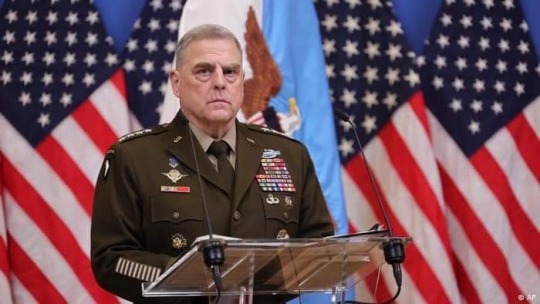
#kurds#kurdistan#kurdish#syrian kurds#rojava#sdf#ypg#ypj#kurdish ypg#northern syria#syria#سوريا syria#war in syria#usa army
6 notes
·
View notes

